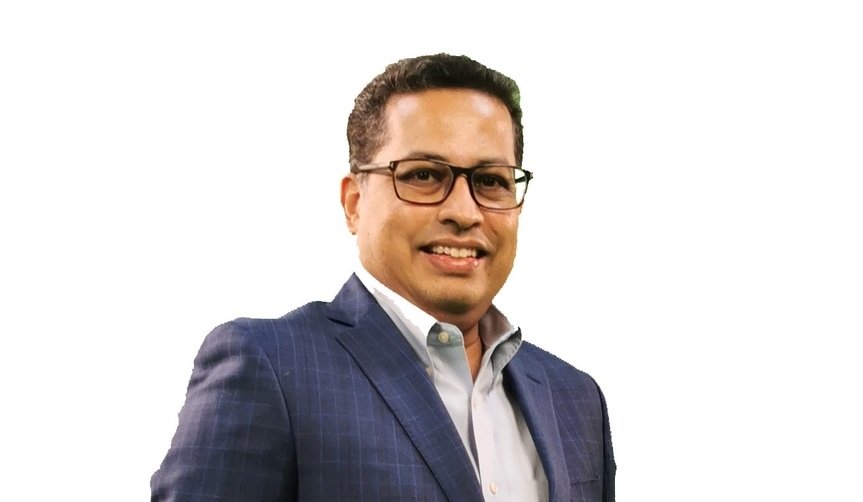
Sunny Rao, Senior Vice President, Vonage, Singapore
COVID-19 has caused huge disruptions across industries, including healthcare. Healthcare systems overwhelmed by rising infections have pushed the global healthcare industry to reevaluate the delivery of services and the overall patient journey. To control the spread of the virus the healthcare sector – hospitals, doctors and service providers – had to quickly adopt digital technologies to create new approaches for a traditionally physical service.
Telemedicine has emerged as a vital way for a host of healthcare services in Asia Pacific to operate, spanning diagnosis, treatment, monitoring and consultations. A majority of hospitals are exploring and trialling digital health solutions - if not already in use. In Singapore, the adoption rate is 94 percent, followed by China (89%), Australia (84%) and Japan (61%).
Patients are also more receptive to digital alternatives. Singapore-headquartered telemedicine platform MyDoc saw its number of monthly active users grow 272 percent from January 2019 to January 2021. Likewise, China’s Ping An Good Doctor saw an 18 percent increase in newly registered users and a 24 percent increase in daily consultations in 2020 compared with 2019.
These statistics are reflective of how the pandemic has significantly changed and is increasingly normalising the use of digital solutions in healthcare. As COVID-19 wears on, these digital care models will shape the future of the industry. Service providers need to adapt to this new normal to make healthcare more accessible and simultaneously, improve workflow processes.
Here are the ways digital solutions are reimagining healthcare in Asia.
Transforming Healthcare Consultations through Video
The ability to interact with doctors and specialists in real-time is making healthcare more accessible, especially during the global pandemic. Video solutions have been a key enabler of this.
Thanks to advances in technology these video conferencing tools can be easily embedded into existing health platforms using video application programming interfaces (APIs). Patients can e-meet their physicians, nutritionists and fitness/physical therapists from the comfort of their homes. This is also advantageous for healthcare providers, limiting their own exposure to COVID-19.
Preference for video communication has increased significantly. In healthcare, 25 percent of 5,000 global consumers reported using video to speak with a therapist for a counselling session while 16 percent used video chats to describe symptoms for a non-emergency condition.
Australia-based aged care and disability support provider Feros Care uses our Video API for its Virtual Social Centre to conduct real-time live-streamed events for more than 600 of its members. These events cover a wide range of activities beyond healthcare, from exercise classes and talks on healthy living, to games, entertainment and virtual social gatherings and can be experienced on any device.
Insung Information, a leading healthcare solutions firm in Korea, embedded Video APIs within its telehealth devices (HiCare Hub, HiCare and HiCare Home Doctor), equipping doctors to teleconsult with patients through a browser, or application on a PC, laptop, or mobile device. Chang Yoon Lee, General Manager of the Healthcare Business Division, Insung Information, acknowledged how the pandemic has shown an immense scope for telemedicine services in Korea. He believes that high video quality, along with security and ease of use, is essential for the changed telemedicine market.
Providing Critical Care
Technology extends its benefits even to some of the most at-risk patients – those in intensive care. Hospitals can easily integrate voice APIs into their existing communication systems to cater to critical cases that need immediate medical attention and rapid responses, enabling employees to perform more efficiently.
Taiwan-based Chi Mei Hospital uses the Vonage Voice API to alert its medical staff of critical emergencies that need to be addressed extremely quickly; for example, ST-segment elevation myocardial infarction (STEMI), a very serious type of heart attack. When staff on duty detect a case of STEMI, they press an alert button on their mobile device, triggering a Vonage-enabled text-to-speech voice alert to the mobile phones of the cardiologist and cardiac catheter staff on call. The practitioners can then rush to administer life-saving treatment to the patient.
Managing Administrative Functions with Communication Tools
Telemedicine also has the ability to ease workloads and automate processes. Using a virtual receptionist, hospital staff can be more productive and concentrate on more critical tasks.
Virtual receptionists are a smart, effective way to manage repetitive tasks and optimise processes. They can be programmed to easily answer frequently asked questions, handle inquiries, transfer calls, collect caller information, schedule appointments, respond to website visitors through a live chat window and much more.
Another area that digital communication tools provide great benefit is in contact centres. These solutions are especially important for healthcare facilities which are struggling to manage an increase in patient volumes.
Through APIs, contact centres can offer an omnichannel communications approach. Patients can start a conversation on the channel of their choice, such as SMS messaging or through an app. Some might opt to get quick answers from a chatbot. After starting the conversation, the patient can seamlessly switch channels in their follow up correspondence without the need to repeat themselves. The history of the conversation is automatically captured and accessible to live agents.
Contact centres can also integrate AI solutions. Customer service voicebots, for instance, can answer customers' questions or even provide step-by-step instructions to resolve issues. Voice assistants can help schedule appointments, make calls or route patients to the best-skilled doctors or nurses, send SMS messages, and even translate voicemails to text.
They also offer AI enabled insights on patient prescriptions and medication adherence. The technology can easily understand complex interactions between a healthcare provider and patient and visualise the effectiveness of patient, sales and marketing programmes.
The Future of Healthcare
Digital health - through solutions like APIs - has proven its effectiveness and essentiality during this pandemic and will continue to gain importance even after it is over. It is imperative that its adoption continues to make healthcare increasingly accessible to all and at the same time, optimise workflow processes for healthcare providers.




